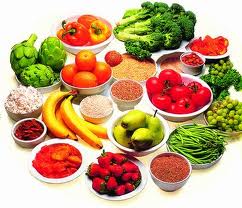
Physicians recommend seven basic steps for a balanced, healthy diet based on The Food Guide Pyramid developed by the U.S. Departments of Agriculture and Health and Human Services:
- Eat a variety of food
- Maintain an appropriate weight
- Consume fat and cholesterol in moderation
- Consume sugar in moderation
- Eat plenty of fresh fruits and vegetables
- Use salt and sodium in moderation
- Drink alcohol in moderation

A diet low in calcium and Vitamin D increases the risk of developing osteoporosis-- a condition where bones become thin and brittle. As calcium is one of the principal factors that helps the body build and maintain strong bones, not getting enough calcium may hinder bone development. Obtaining enough Vitamin D is also important because it aids in absorbing calcium from food. Vitamin D is found in foods such as fortified dairy products and in sunlight.

Several things can be done to make meal preparation easier when joints are sore or swollen. Some include:
- Take rests while preparing meals to give joints a break
- Use convenience foods once in a while to lower the strain of cooking food
- Keep common cooking utensils in an easy-to-reach place
- Buy pre-sliced and pre-chopped vegetables from the grocery store to eliminate work involved in slicing and dicing
- Use kitchen appliances such as electric can openers and microwave ovens to ease the burden of cooking

Being overweight puts stress on joints, particularly the weight-bearing joints such as the knees and hips. It has a negative impact on mobility. Losing weight can be made fun by engaging in physical activity that is enjoyable. Changes in diet will probably also be necessary, but the payoff is that being at an optimal weight makes people feel happier and stronger.

Sodium, common in processed, fast foods, causes water retention, as do some arthritis drugs such as corticosteroids. Your doctor may recommend a low-sodium diet for arthritis patients because water retention may cause joints to swell, sometimes restricting movement.
|



